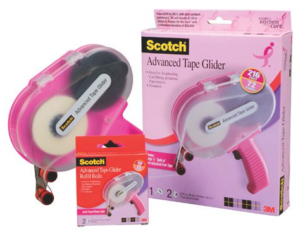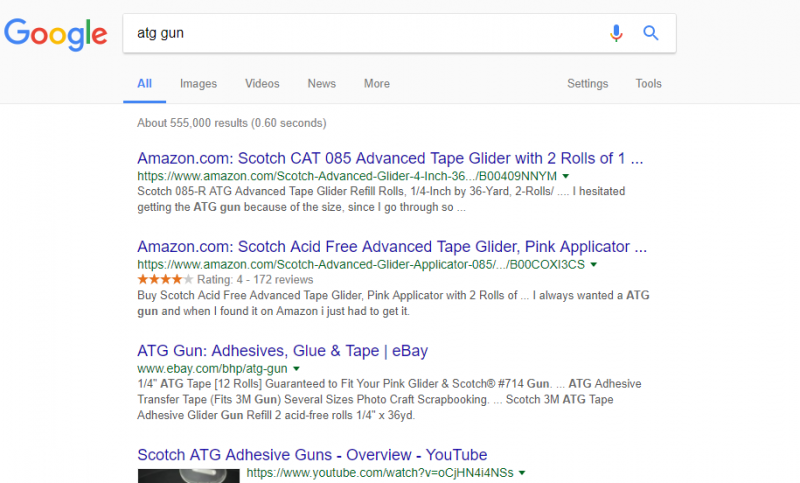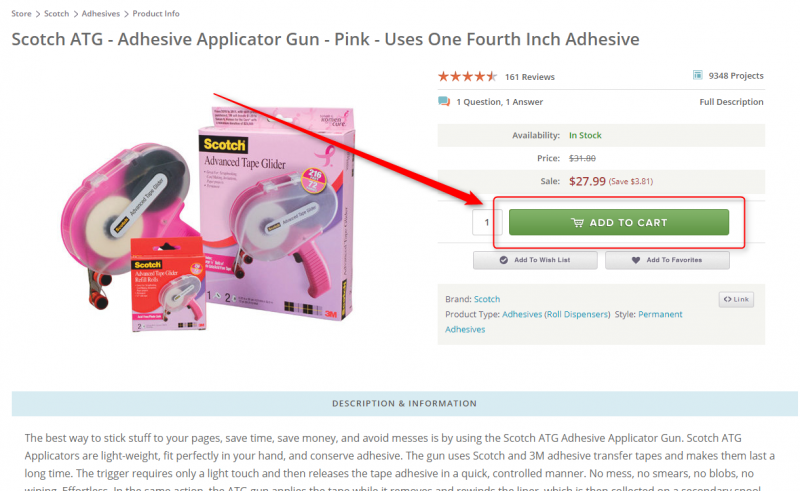What is an affiliate program. How it works.
The case of the Pink ATG
So let’s say you constantly use an ATG Gun (the double-sided glue tape dispenser pictured above) for every project you do. And people start asking you, where they can find the gun to get one! Instead of just sending them to search for a shop to pick one, you provide them with a (special) link so they can go directly to your chosen shop’s page where they can pick it.

Let’s see how that looks:
1) Just mentioning the product
Mentioning the product in your blog post (without any links) would look something like this:
“… then use your ATG GUN to stick the design to the white CARDSTOCK you folded with the FISKARS BONE FOLDER as shown in the photo below…”
Any interested user will need to search for the products, most probably on google: https://www.google.gr/search?q=atg+gun&rlz=1C1GGRV…
Not a pretty picture. The disadvantage in this scenario is that if the user is actually interested in the products, she will have to copy the names and paste them in google, doing a very generic search. The results are usually all over the place, not making it easy to buy the product. And you get nothing for your recommendation!

Another side-effect is that amazon usually gets the sale which is not the optimal solution (we cover this in another blog post).
2) Putting a link to a shop
Okay, this is much better. We put a link to scrapbook.com:
https://www.scrapbook.com/store/jv-cat085.html
This shop is totally specialized in crafting supplies. This means that they will find whatever they need, in addition to the ATG gun and they will have a much better customer experience.
This link, that sends you DIRECTLY to a product, is called a deep link. The alternative would be to just send her to the store’s main page. But, you saved her from searching!

The downside? You still don’t get anything!
It is really helpful to your readers and they usually appreciate it. (As good as it may be for the soul, appreciation does not pay for supplies, or blog hosting, or the time lovingly put in your project though!)
3) Putting an AFFILIATE link to a shop
The affiliate links are (and look) special:
http://www.shareasale.com/m-pr.cfm?merchantID=7429&userID=382789&productID=550196734
Alright! Now if a reader clicks on the link, she will be taken to the very page of the shop we want, to buy the ATG Gun! And you will make some money in the process, usually a percentage of her whole sale, not just the ATG. So if along the ATG she decides to buy a Sizzix Big Shot pro as well (priced at $319) you get a percentage out of that as well!
Minimizing the time from first seeing the product to putting it in your shopping basket is one of the key elements to increase your conversion ratio (the people who actually buy, after they click)
So you now know how this works!
So what is an affiliate program?
An affiliate program (also called an associate program in amazon’s lingo) is a method of promoting a merchant’s products to a consumer, via presentation by an affiliate (that would be you).
In a little more detail: A blogger, YouTuber, “instagrammer” or anyone with a presence on the web (the affiliate), may promote some merchant’s goods to her audience. When the audience makes a purchase from the merchant, the affiliate (blogger, youtuber etc) receives a commission from the sale.
The commission the affiliate receives comes out of the merchant’s pocket. So it is a win-win deal. The merchant sells the product, the affiliate receives a payment for the sale and the buyer buys a product at the same price she would, while helping the affiliate sustain her business.
While there are more details to the whole process, it boils down to this:
- You, the affiliate, promote a product. This promotion may be a video with you, using the product, doing a review, unboxing, comparing it to similar products or just mentioning it in your post/video.
- You put a special link to the product, for your users to click, if they want to purchase it. This link has a special format and informs the merchant that the sale came from you (so you are credited for it).
- When your readers/viewers click and purchase, the merchant credits you a percentage of the sale (usually 8-10%).
-
Each month, the merchant pays you last month’s sales credits (usually via bank transfer or PayPal)
In conclusion:
If you, in any way use products for your blog post/youtube content, you can make them available to your readers to shop, in three ways:
-
In the first case, the reader had to resort in extra steps and extra frustration to purchase. She may have ended up in a random store and you didn’t even get the credit for the sale.
-
In the second case, your reader could not be happier. You just sent her to a specialized shop, to the exact product page.
-
In the third case, the process does not really change for the reader. But the merchant will know that the sale came from you, so you will make a commission out of it. Well done!
Using an affiliate program, will make your readers happy and you can get money in the form of percentage of the sales you generate.
These are the complete basics on how an affiliate program works and why you should become an affiliate. In our next “Making Money Monday” blog post where we explain what an affiliate network is, why you need it and how to apply to become a member (hint: it is easy!)
Stay tuned!